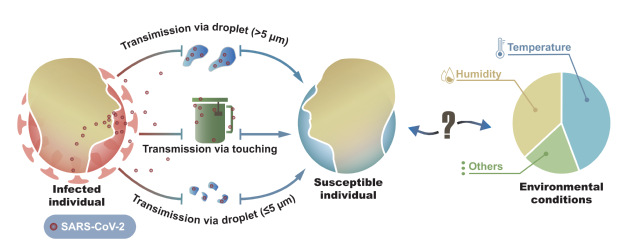
Highlights
The SARS-CoV-2 remained viable for a couple of hours in aerosols, comparing with longer stability on inert surfaces.
The temperature and humidity influenced the trajectory of SARS-CoV-2 transmission via aerosols.
More evidence may support that rising temperatures seem to be slightly and negatively associated with COVID-19 growth.
COVID-19 spread appears to have been controlled primarily by government interventions.
Abstract: Since December 2019, the 2019 coronavirus disease (COVID-19) outbreak has become a global pandemic. Understanding the role of environmental conditions is important in impeding the spread of COVID-19. Given that airborne spread and contact transmission are considered the main pathways for the spread of COVID-19, this narrative review first summarized the role of temperature and humidity in the airborne trajectory of severe acute respiratory syndrome coronavirus 2 (SARS-CoV-2). Meanwhile, we reviewed the persistence of the virus in aerosols and on inert surfaces and summarized how the persistence of SARS-CoV-2 is affected by temperature and humidity. We also examined the existing epidemiological evidence and addressed the limitations of these epidemiological studies. Although uncertainty remains, more evidence may support the idea that high temperature is slightly and negatively associated with COVID-19 growth, while the conclusion for humidity is still conflicting. Nonetheless, the spread of COVID-19 appears to have been controlled primarily by government interventions rather than environmental factors.
Keywords: SARS-CoV-2; temperature; humidity; aerosol; transmission
DOI: 10.1016/j.eehl.2022.04.006